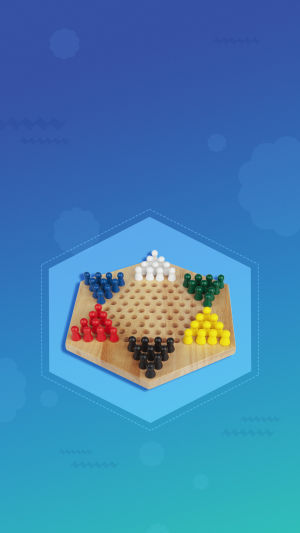Checkers is an educational board game that is enjoyed by young and old alike and is widely played. Checkers is a game that can be played by two to six players at the same time. The board is in the shape of a six-pointed star and the pieces are divided into six colors, with 10 or 15 pieces of each color, with each player using one corner of checkers and having one color of the piece.
The rules of checkers are simple, the movement of the pieces can be made one step at a time in six adjacent directions connected by a straight line, if there is a piece from any side in an adjacent position, the next position in the straight line to that position is empty, you can "jump" directly to that empty position, "jump The "jumps" may be made consecutively as long as the same conditions are met. Whoever is the first to take all the squares directly opposite to each other wins.
The opening plays a rather important part in a game of checkers, just like the start in a sprint, if you fall behind you have almost no chance, so in a game between checkers masters.
If you make a mistake in the opening, you will be beaten by the tidal wave of the opponent's attack and left defenseless and in a state of disarray. Of course, like any other game, the opening of checkers has its own fixed moves and corresponding countermeasures, which we may as well borrow from the term "fixed" in Go.
Checkers was founded in England in 1880 and is known by its English name: Halma (Greek for 'jump'). The first book on checkers was published in Venice as early as 1531. Developed on the basis of checkers, checkers has gained popularity in many countries. The International Checkers Federation already has more than 50 member countries.
According to historical records, checkers first came out of ancient Egypt, Rome, and Greece. Paintings of people playing checkers have been found in tombs in ancient Egypt. Museums in the UK have seal engravings of ancient Egyptian lions and antelopes playing checkers.
Two marble checkerboards excavated from near the pyramids are kept in Loire, France. Ancient checkers spread to Europe, Asia, Africa, and North America, and later underwent some changes.
National checkers were formed in many countries. The number of squares on the board is 64 in most countries and is called: 64 checkers. But in Babylon, it is one hundred squares and is called: Hundred Checkers. In Canada, the checkers are one hundred and forty-four squares, with twenty pieces on each side.
In checkers, jumping is the most important feature of the game, as long as the conditions are met, you can jump continuously. Therefore, in the middle game, the principle is to jump, to fix your own "jumping path", to make your own jumping path as smooth as possible, and at the same time, to pay attention to the fact that you cannot let your own jumping path provide your opponent with the convenience of jumping.
This is called attacking. It is not only about jumping well yourself, but also about preventing your opponent from jumping. If your opponent has a good path and you let him jump all the way down, then you are most likely not far from losing.
This is defense. You are required to grasp the key to the position and restrain your opponent's jump. Attack and defense are the most crucial elements of checkers. Attack and defense are not independent, and neither attacking without defense nor defense without attacking is the way to win. Only by grasping the dialectical relationship between attack and defense will you be able to win a hundred battles.





